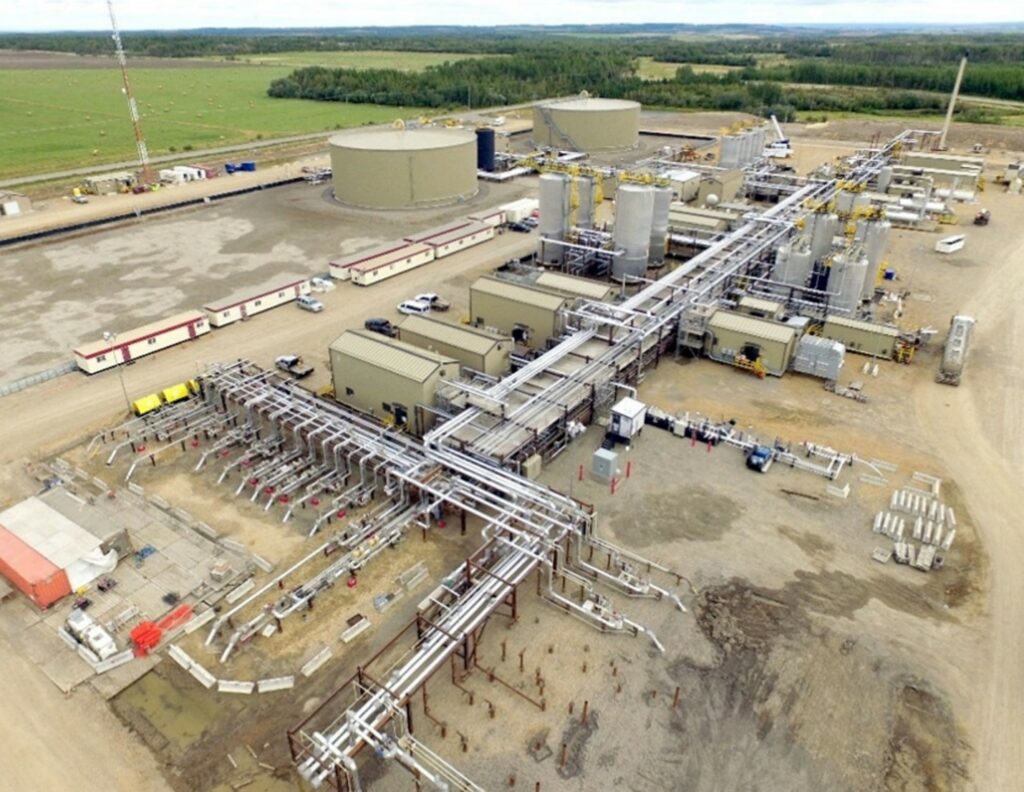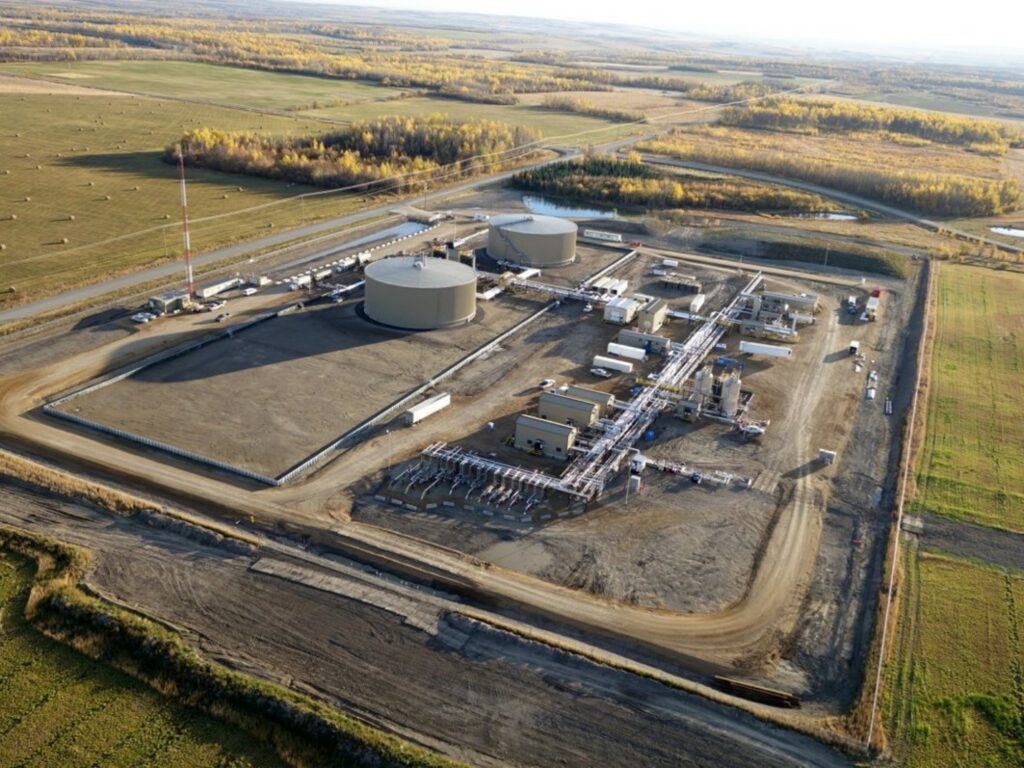In 2024, parts of Western Canada are experiencing severe drought conditions and low water levels. Drought impacts are evident in some oil and natural gas operating areas, which may impact industrial access to fresh water.
Oil and natural gas companies normally divert fresh surface water during periods of high flow (spring freshet) and store the water in reservoirs for later use. This reduces stress on the watercourse during periods of decreased flow.
Oil and natural gas companies are monitoring drought conditions and proactively engaging with provincial authorities as needed regarding their fresh water demand forecasts and drought mitigation plans. In addition to adhering to water licence conditions such as withdrawal limits, oil and natural gas companies are proactively planning for fresh water shortages by assessing ways to reduce surface water use in their operations, including the evaluation of alternative water sources.
How is industry taking action to prepare for water shortages?
Some examples of measures individual companies are taking to sustain production and minimize fresh water use include:
- Increasing reuse of produced water by constructing new produced water hubs or expanding existing hubs
- Actively increasing use of alternative water sources such as lower-quality groundwater from deeper aquifers, municipal wastewater, and recycled produced water to reduce fresh water needs
- Timing hydraulic fracturing schedules to maximize water reuse
- Using groundwater resources for well drilling and completions to offset surface water withdrawals (short-term measure)
- Optimizing water storage and use within operating areas by moving stored water from areas of low use to higher use
- Investigating treatment of sour produced water for reuse
- Sharing produced water with other operators
- Advocating for regulatory pathways to enable sharing of fresh water already in storage between operators.

CAPP media statement:
“Water is a critically important resource. Oil and natural gas companies are monitoring drought conditions and proactively engaging with provincial authorities as needed regarding their fresh water demand forecasts and drought mitigation plans. Individual companies are proactively planning for fresh water shortages by assessing ways to reduce surface water use in their operations, including the evaluation of alternative water sources such as lower-quality groundwater from deeper aquifers, municipal wastewater, and recycled produced water.
According to the Alberta Energy Regulator’s industry water use performance report, in 2022, the oil and natural gas industry used about 0.18 per cent of the non-saline water available in Alberta, and 82 per cent of the water used to recover energy resources was recycled water. In Northeastern B.C., each year the amount of water withdrawn by industry averages 0.004 per cent of the total volume of annual runoff. Additionally, CAPP has been engaging with provincial authorities to advance other approaches that could help enhance water management, such as enabling sharing of fresh water already in storage between operators and, in Alberta, low-risk inter-basin water transfers to alleviate pressure on water-stressed areas if a more abundant water source in an adjacent basin is available within the province.”
Industry spotlight: Ovintiv’s water resource hubs
Water sources and infrastructure options vary by region and no single water management approach works for all areas.
Ovintiv has constructed water resource hubs in its BC Montney operating area that operate as closed-loop industrial water recycling systems that run on hydroelectricity. Produced water from operations is stored in subsurface geological reservoirs, recycled at water hubs, then transported via underground pipelines to be reused in operations.
Since the water hubs started operating in 2016, Ovintiv has conserved approximately 1.5 billion gallons of fresh water, equivalent to the average annual water use of approximately 10,500 households.
In addition to the positive community impact made through water conservation, the hydroelectricity-powered water hubs have allowed Ovintiv to reduce overall emissions and noise. Ovintiv’s reliable water pipeline infrastructure has eliminated nearly 200,000 water hauling truck trips since the hubs started operations. Environmental risks are also reduced as the water hubs rely on subsurface geological reservoirs for storage, eliminating the need for produced water ponds at the surface.
This responsible water management strategy helps Ovintiv manage operational risks relating to drought and enables partnerships with other operators on water sharing to mitigate industrial fresh water use by utilizing recycled operational water from Ovintiv water hubs.

In a single year (2023), Ovintiv was able to offset over 250,000 m3 or 66 million gallons of surface water withdrawn from approved fresh water licenses in B.C. This is equivalent to the average annual water use of approximately 600 households
Technology spotlight
Alberta’s conventional oil and natural gas industry provides ongoing public access to the Alberta Water Tool through the Alberta Upstream Petroleum Research Fund (AUPRF). The web-based tool provides public access to information on water supply, demand, and use. The tool also facilitates the collection of real-time hydrological information, which can be used to support the preparation of water use applications. In times of drought, this public information tool can help water users assess current water availability conditions and select water sources that are under less pressure.
In British Columbia, the BC Water Tool provides accurate, real-time information about water resources and existing water users in B.C. The Northeast Water Tool (NEWT) is an award-winning hydrology support tool owned and maintained by the B.C. Energy Regulator.
